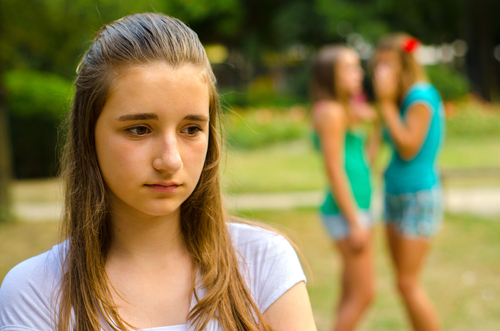As humans, we want to understand ourselves better and feel comfortable in our identity. There is a need to want to understand what’s going on to control it and make sense of it. Labeling helps categorize behaviors and situations. Teenagers are impulsive; hence, they are often quick to slap labels on themselves or others without self-identifying.
A primary purpose of labels is to identify and keep things and people safe. Most people label dangerous stuff to keep away from it and be careful. Labels are not only used to describe danger but also to sort people out into various categories like their sexuality. To know more about teen labels in 2022, keep reading.
How Labeling Affects Teen
Although labeling is an essential part of society, not all teenagers like to be labeled. Labeling might be troubling for teenagers, especially when they do not accept the label. These teenagers struggle to shake off their labels as regular individuals. Labeling can affect a teenager in various ways, mentally and emotionally.
Positive and Negative Labeling
Labeling may be positive or negative. Some labels seem great at the moment, while others may seem very hurtful. When a teenager gets a negative label either from their teachers or peers in school, they may end up troubled. It is always difficult for them to shake it off and bounce back from it. Other people gloom unto a person’s general label and treat it as the truth.
Also, people with positive labels are perceived as their labels whenever they enter the school environment. When a label sticks around someone for a long time, people percept them that way. The more people act on a label, the more it gains traction and reinforcement.
Why Are Labels Important?
One of the most critical issues teenagers face in 2022 is the identity crisis. Labels help to impact and provide goals in a child’s life. Labeling helps instill a sense of self-identity and improve a teenager’s positive self-esteem. It also helps teenagers to relate better with their peers and understand themselves.
Type of Labels
Various labels exist in the world today. Parents must respect their child’s definitions of each label. Some labels cover gender identity and sexuality variations. Some labels also cover the genders outside the binary, gender expression, and various relationship types. New allies and members of the LGBTQ+ community may find these labels overwhelming.
The following are the various type of teen labels in the world today:
- Lesbian (L): A lesbian is a female who is physically and sexually attracted to other females. Some non-binary people may also identify as lesbians. It is a word used for women to relate their sexual identity and behavior.
- Gay (G): This is a word used to identify a man emotionally, physically, and sexually attracted to another man. It is also a term to identify the same sex gender attraction. There are non-binary identities who also consider themselves gay.
- Bisexual (B): Bisexual is a label used to identify a woman or man attracted to both genders. A bisexual person is attracted romantically to multiple genders, including theirs.
- Transgender (T): This term describes people whose internal sense of being female, male, or something is different from their assigned sex at birth.
- Queer (Q): Queer is a general term for people in the LGBTQ+ community. Some LGBTQ+ individuals find this word offensive if spoken by someone not in the community. However, it is better to receive permission from the person before calling them.
- Intersex (I): This term is used to describe people with variations in chromosomes, hormones, and reproductive organs. In this case, the people’s genitalia does not fit into the female or male construct.
- Asexual (A): Asexual is a term used to denote people with little or no sexual attraction or desire for another person.
How to Help Your Teen Reverse a Negative Label
When teenagers have a negative label, it lowers their self-esteem and becomes part of their identity. The parent might need to step in if this negative labeling persists in the child’s environment. Here are a few steps to take to help your teenager reverse a negative label:
1. Reach out to the teenager’s teacher and set up a meeting with them. Discuss labeling your teenager negatively with the teacher and express your concerns with them. Also, if the peers are doing the negative labeling, call the teacher’s attention to it. However, if the problem persists, pull in the vice-principal or principal for a meeting.
2. If your teenager has a negative label from their peers, find out the label’s origin. Teenagers might want to be a figure their peers don’t see them as, hence the negative label. Discuss and talk to your teenager about their future goals and plans. Also, help your teen develop a plan to achieve a preferable label.
3. Some peers are mean. These peers may be giving your teenager a negative name to be hurtful and spiteful. Remind your teenager that no one decides their self-worth and they are valuable with or without their peer’s approval.
Effects of Negative labeling on a Teenager
Wrongfully labeling a teenager may have some negative effect on their mental health. These teenagers are sensitive and later become troubled. There are some effects of negative labeling on a teenager, which are:
- Negative labeling affects the way teenagers see themselves
- It places the teenager in a box of a particular image
- Negative labeling shapes the expectations people have of the teenager
- When a teenager gets labeled negatively, it tends to reflect in their behavior in a wrong way
- These labels also adversely affect the parent of the teenager
- It adversely affects the teenager’s self-confidence
Final Thoughts
Labeling is a common aspect of society; however, wrongful or harmful labeling is terrible. Negative labeling affects the lives of both the parent and teenager adversely. However, positive labeling also affects their lives in a good way. Parents need to pay close attention to their teenagers to know if labels affect them in the wrong way.





0 Comments